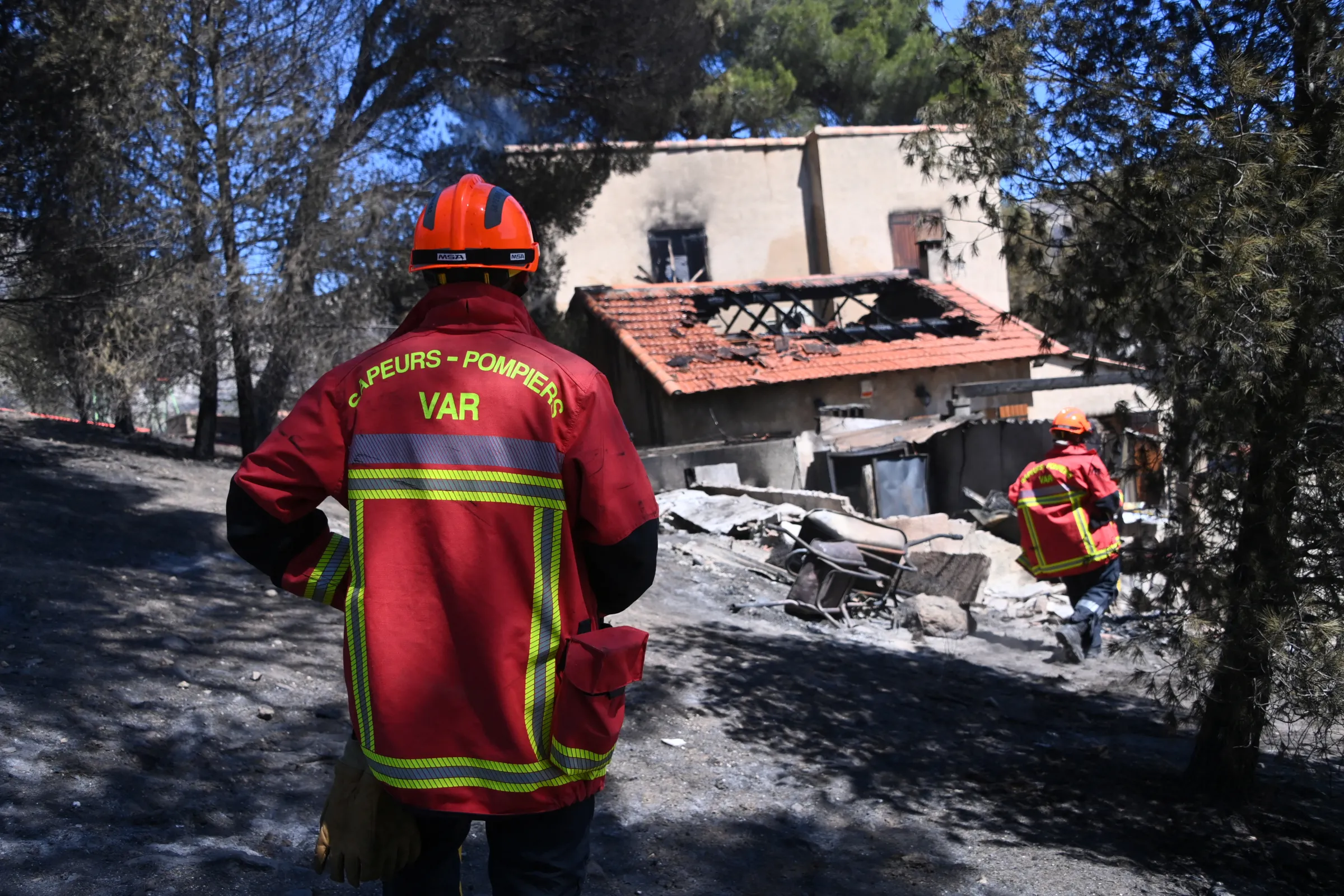As wildfires spread to Europe's cities, what can LA teach us?

French firefighters check a house destroyed by a wildfire in the L'Estaque district of Marseille, southern France, July 9, 2025. REUTERS/Alexandre Dimou
What’s the context?
Europe's expanding cities face increasing wildfire risk as climate change drives hotter summers: policy-makers need to prepare.
BRUSSELS - As hundreds of firefighters battled fast-moving wildfires just outside the French city of Marseille, experts warned the risk to other European urban centres was rising as suburbs expand into forested areas and climate change drives hotter, drier summers.
More than twice as many urban areas in Europe are at risk of wildfires than in either North America or Asia, according to a May report by the European Academies Science Advisory Council, which advises European policymakers.
The ferocious wildfires that ripped through Los Angeles in January, killing at least 22 people and destroying around 12,000 homes, provide both a powerful warning and hard-won lessons for European policymakers, experts say.
"The myth of fire suppression collapsed in California," said Elias Tziritis, a veteran firefighter and forest fires coordinator at WWF Greece, referring to the reliance on boosting firefighting efforts to deal with mega blazes, rather than focusing on prevention.
"Fires are getting more intense. We need to create a fire- resilient society," he said.
Firebelt suburbs
Human expansion into the wildland-urban interface (WUI)- the boundary where human developments and natural landscapes intersect - has grown by almost 36% since 2000, while global warming will increase the risk of extreme fires by 50% by the end of the century, according to a report for the U.N. Environment Programme.
With 90% of fires caused by people, the human push into the WUI increases the risk of wildfires, but this could be mitigated by careful management, Ine Vandecasteele, urban adaptation expert at the European Environment Agency told Context.
"The human part is being managed in certain places, with projects to reduce abandoned land, managing the vegetation to reduce the fuel availability," she said.
"But still not enough is being done to manage the current, never mind the future, expected impacts of climate change," Vandecasteele said.
In Los Angeles, what started as a wildland fire quickly turned into an urban blaze as powerful winds drove flames across parched landscapes and then from house to house.

A home is consumed by flames in the River Fire, a wildfire burning near Grass Valley, California, U.S., August 4, 2021. REUTERS/Fred Greaves
A home is consumed by flames in the River Fire, a wildfire burning near Grass Valley, California, U.S., August 4, 2021. REUTERS/Fred Greaves
Experts said urban sprawl and the fact that many houses in California are built of wood contributed to the devastation.
While Europe's mostly stone and concrete buildings would resist better, urban sprawl increases risk.
In Europe, "it's a matter of time before you see a larger, more intense fire," said Lindon Pronto, senior fire management expert at the European Forest Institute and an ex-firefighter. "But not necessarily a full on house-to-house ignition scenario like in Los Angeles."
California's rules on using fire-resistant building materials were credited with reducing damage and interrupting the chain reaction, but houses outside the regulated zones were vulnerable as they were not bound by the same building codes.
Vandecasteele said Europe must learn from L.A. by, for example, noting the importance of mapping risk in borderlands between people and forests, or fields to ensure regulations are up to scratch.
"Once you can map the wildland-urban interface, then you can start to restrict building, or implement green buffer strips of lower vegetation that can stop the fire spreading so easily."
Another challenge comes from unregulated construction.
In Greece, which experienced some of Europe's most devastating wildfires in 2018, 2021 and 2024, illegal construction in wildfire-prone areas increases risks, said Tziritis.
Living with fire
Mediterranean countries have a similar climate to Los Angeles, with hot dry summers, mild winters and long fire seasons, but other European countries are also facing a growing risk, as seen in 2022 when hundreds of fires broke out across London on a single day following record temperatures.
With climate change likely to intensify extreme weather, experts say a shift in mindset is needed.
"You have to look at this as a slow process that will take many decades to change how we view the landscape," said Thomas Elmqvist, a professor in Natural Resource Management and urban landscapes at Stockholm University.
He said EU rules to promote sustainable farming and restore ecosystems to make forests more resilient and lower wildfire risk must be applied.
"Because the lesson from L.A. was that the municipality had neglected the landscape. They have regulations, but they weren't implemented," he said.
Other experts said nature protection rules must be updated to allow for the use of prescribed burning to clear vegetation and help slow the spread of fires.
"Most national legislation in Europe doesn't recognise the use of fire as a management tool (to clear vegetation)," said Pronto. Not clearing it, he said, meant there was "more fuel for the fire to play around with," when a wildfire breaks out.
He also said forests needed to be allowed to grow back after fires, rather than be replanted.
"Nature knows how to correct itself."
The mindset shift will also require Europe's policy-makers to think beyond the next ballot.
"As a politician you can spend money on an aeroplane and show what you've done," said Elmqvist.
"Long-term changes in landscape management are much more complex and it takes time to see results."
(Reporting by Joanna Gill; Editing by Jon Hemming.)
Context is powered by the Thomson Reuters Foundation Newsroom.
Our Standards: Thomson Reuters Trust Principles
Tags
- Extreme weather
- Climate policy
- Climate and health
- Forests


















